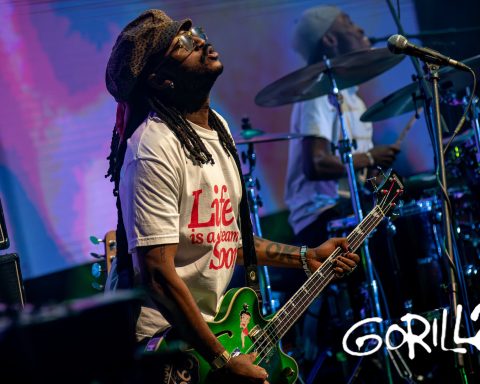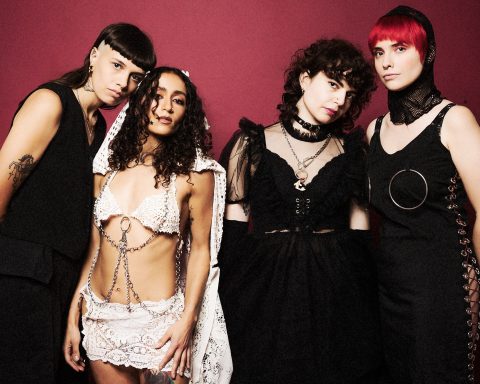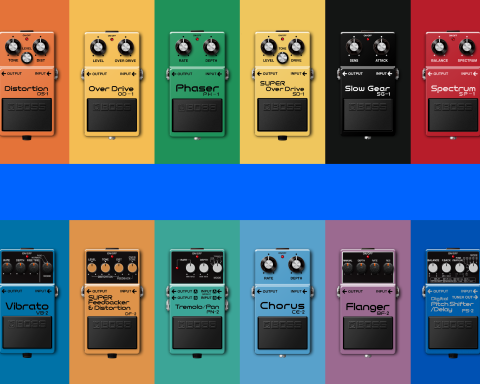Livestreaming is an excellent channel for pros and amateurs alike to get music out there, build a profile, and monetize activities. At the same time, they’ll capture the raw, real-time thrill of a gig. Streaming gear like the BOSS Gigcaster makes it easy to achieve the pro production values that turn heads and win subscribers. From the best social platforms to building a rig, here’s everything guitarists need to know to get started with livestreaming.
What is Livestreaming?
Rewind to the early days of the pandemic. Tumbleweeds blew through the live circuit. The world’s working musicians found themselves with canceled tours, and income streams dried to a trickle. But there’s nothing like adversity to spark innovation. Within days, the first livestreamers had set up their makeshift production studios. These pioneers filmed and broadcasted gigs and music lessons in real-time from their bedrooms to the world over social media.
Many predicted the livestreaming boom would burn out when in-person gatherings resumed. However, what started as a Plan B became a permanent fixture. Immediate and convenient, livestreaming has the thrilling sense of a high-wire act that one can’t get from a pre-recorded video. The best livestreamers get heard, gain fans, and earn money from the performance formats.
With the rise of a fresh generation of specialized gear, like the BOSS Gigcaster, there’s never been a better time to get into livestreaming. Conversely, countless other guitarists, vocalists, and musicians are gunning for online eyeballs. As a result, it’s vital for ambitious livestreamers to learn the right approach, master their gear, and retain the golden rules. Before you hit the red button, read on.
"Whatever gives you joy, fits with your brand, and furthers your music career is fair game for livestreaming."
What Content Should I Stream?
Whatever gives you joy, fits with your brand, and furthers your music career is fair game for livestreaming. So far, most guitarists have used this format to perform one-person shows, tapping into the interactive features of social platforms to allow real-time interaction with online audiences.
Livestreaming is also ideal for giving guitar lessons, with tutors able to answer queries as they arise. But from riff walkthroughs to industry Q&As, there are no limits. Think big, then broadcast it.
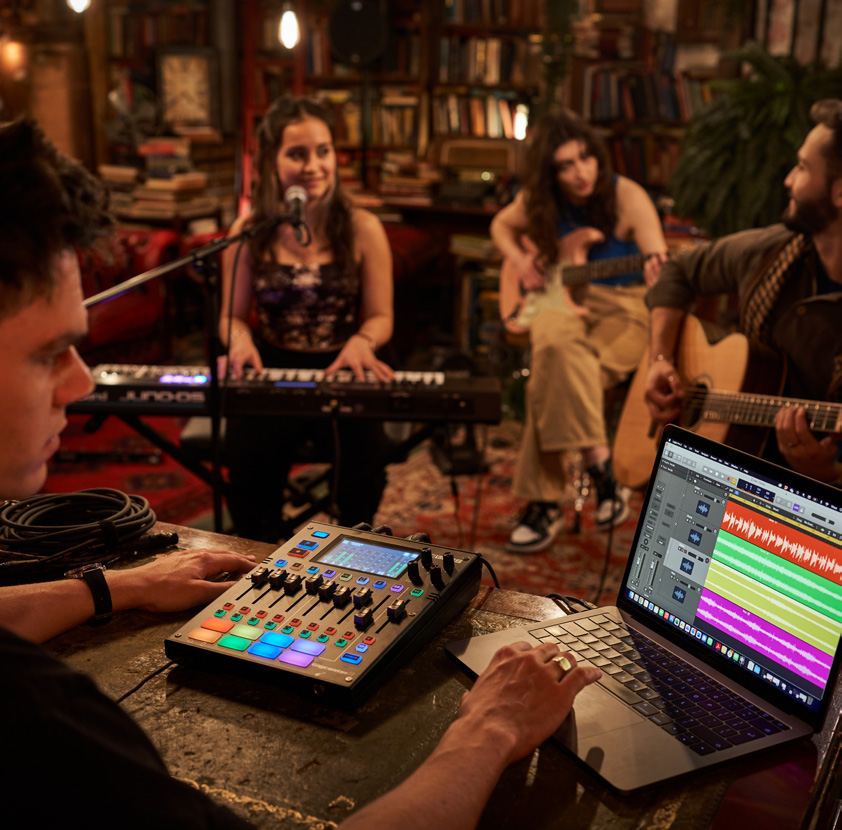
How Do I Livestream Guitar?
One of the biggest draws of livestreaming guitar is that it’s open to everyone, whether you’re a celebrity in a tour bus lounge or a bedroom strummer. All one needs to start livestreaming is an instrument, a webcam-equipped computer or smart device, and a social media account. Set up, introduce yourself, and hit the first chord.
But that’s just the quick-start version of what is fast becoming an art form. To get serious and make an impression with livestreams, hours of practice are ahead. Luckily, here is an array of tools and tips to help elevate your online music-making.
LIVESTREAMING FUNDAMENTALS
Livestreaming relies on impulse, and you may be desperate to get up and running. But before you embark on your first live broadcast, it pays to know the golden rules seasoned streamers swear by.
Staging
Put a little effort into staging the area fans will see during a livestream. Messy shelves and stray laundry are out; nods to your music taste and career achievements are better. Use landscape mode so your entire guitar and both hands remain visible. In addition, position the camera so you appear in the center of the screen. Don’t film from below and use a stand to lock the camera in place, rather than prop it up and watch it slide during the set. If you use a phone, the back camera will be better than selfie mode. Get a helper to hit the button and handle the tech while you focus on the music.
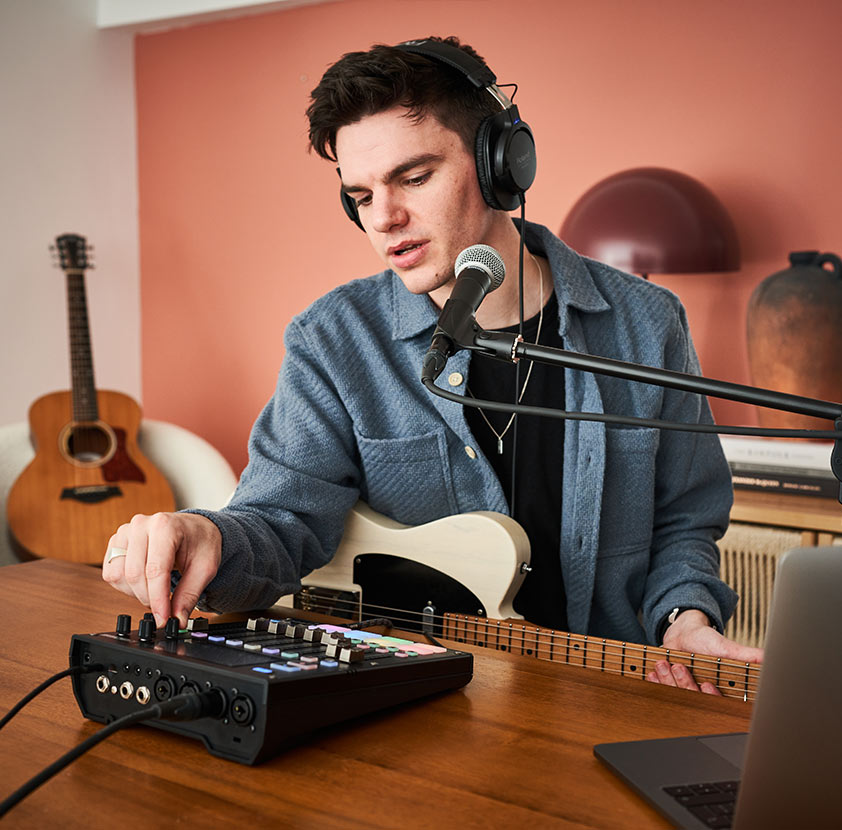
Separate Sources
Using a separate source for video and audio makes for a much cleaner recording. Most social platforms let users do this. Also, remember to disable the voice processing and audio adjustment features. Some software uses these to maintain a steady, compressed volume in business meetings. These functions will suck all the dynamics out of a musical performance. Still, that doesn’t mean you have to settle for a stripped-down tone.
With an advanced mixer like the BOSS Gigcaster, power up a sound with amp models and effects from the GT-1000. At the same time, embellishing vocals using VE vocal processors is easy. Once you’re satisfied with the mix, soundcheck on a private livestream before starting to record. Then listen to the recording and adjust levels.
"Once you're satisfied with the mix, soundcheck on a private livestream before starting to record. Then listen to the recording and adjust levels."
A rock-solid internet connection is a no-brainer. However, perform a speed test to check the bandwidth supports an HD video livestream without drops. This means at least five megabits/second upload speed. When filming on a mobile device, be sure to mute your ringer, notifications, and vibrate function. Also, remember to close any unnecessary apps to prevent lag.
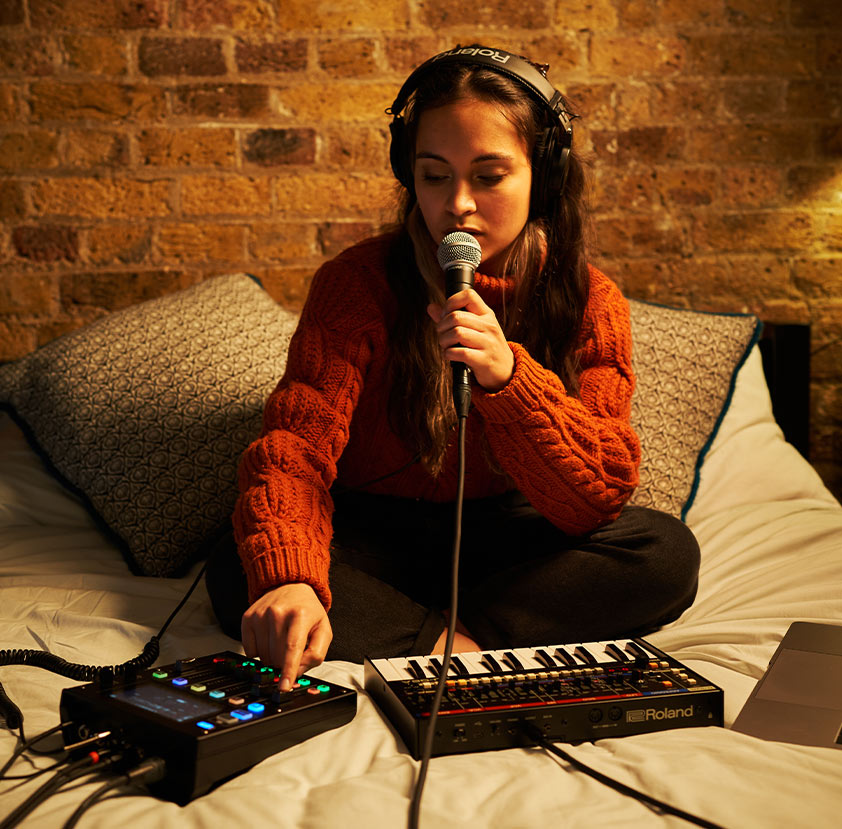
Promotion
The web is a big place. Without promotion, a livestream will tumble unnoticed into the void. Shout about the event on social channels, email existing fans, and invite members of online communities. Dream up a memorable title, an engaging theme, shareable photos, or a quirky promotion. Even better, commit to a regular livestream at the same time each week so fans are likely to remember.
The dream is to monetize livestreams, just like a regular gig. If you’re confident in your fanbase’s loyalty, consider selling tickets in advance using a platform like StageIt. And while nobody likes a constant hard sell during a livestream, don’t be shy about pointing fans toward a merch page or a donation button.
"Shout about the event on social channels, email existing fans, and invite members of online communities."
Lvestreaming Platforms
These days, all major social platforms have livestreaming functionality. A good rule of thumb is to go where your fans are. Kick off a livestream campaign on the social platform where you have the most traffic and engagement. Still, if you’re starting from scratch, here are some of the most popular sites and the logistics you need to get going.
Twitch
Launched in 2011, Twitch is best known for gaming streams. However, it’s also a great way to get music into the world. First, sign up for an account at twitch.tv. Then customize the channel page with relevant links. If you’re streaming from a mobile device, download the Twitch app, log in, tap your profile icon, then hit the Go Live! button to start the stream. For better audio quality, use a laptop and download Twitch Studio software.
YouTube Live
The great grandaddy of video sites is still a livestreaming favorite. A Google account is necessary before creating a YouTube channel. In addition, users will have to use a computer or tablet—not mobile phones—until your channel reaches 1000 subscribers. Encoder streaming is best for ambitious livestreams with advanced production values.
"These days, all major social platforms have livestreaming functionality. A good rule of thumb is to go where your fans are."
Instagram Live launched in 2016. After losing a feature that made livestreams vanish after ending, the platform became a favorite with creators. You’ll find detailed advice on how to livestream on Instagram here.
Discord
A relatively new kid to the scene, Discord launched in 2015 and has since diversified from its original gamer focus into music. It’s simple to get streaming: join a voice channel in your server and hit Go Live. But accessing the high-definition video essential to professional streaming depends on status. Basic users can stream at 720p/30fps but paid subscribers top out at a clean 4k/60fps.

Multiple Platforms Simultaneously
Back on the bricks-and-mortar live circuit, a musician could only play one venue per night. Livestreamers avoid traveling across town. Even better, they can appear in countless places on multiple social platforms simultaneously.
Popular options include Streamlabs, StreamYard, Restream, Lightstream, and ManyCam. For ambitious users, OBS (Open Broadcaster Software) allows switching between multiple cameras and audio inputs. However, OBS demands a high-speed internet connection and a powerful computer.
"On the live circuit, a musician could only play one venue per night. Livestreamers can appear on multiple social platforms simultaneously."
Equipment
Livestreaming isn’t a novelty anymore. To that end, a badly-lit smartphone video with tinny sound cannot command an audience. With the market more saturated than ever, it’s vital to stand out. Ultimately, success depends on songs, performance, and personality. Still, a professional livestreaming rig provides a serious edge.
Here’s an essential gear list for livestreaming guitarists:
- Musical instruments
- Microphone
- BOSS Gigcaster Audio Streaming Mixer
- Headphones
- Webcam
- Streaming software
- Computer with a stable internet connection
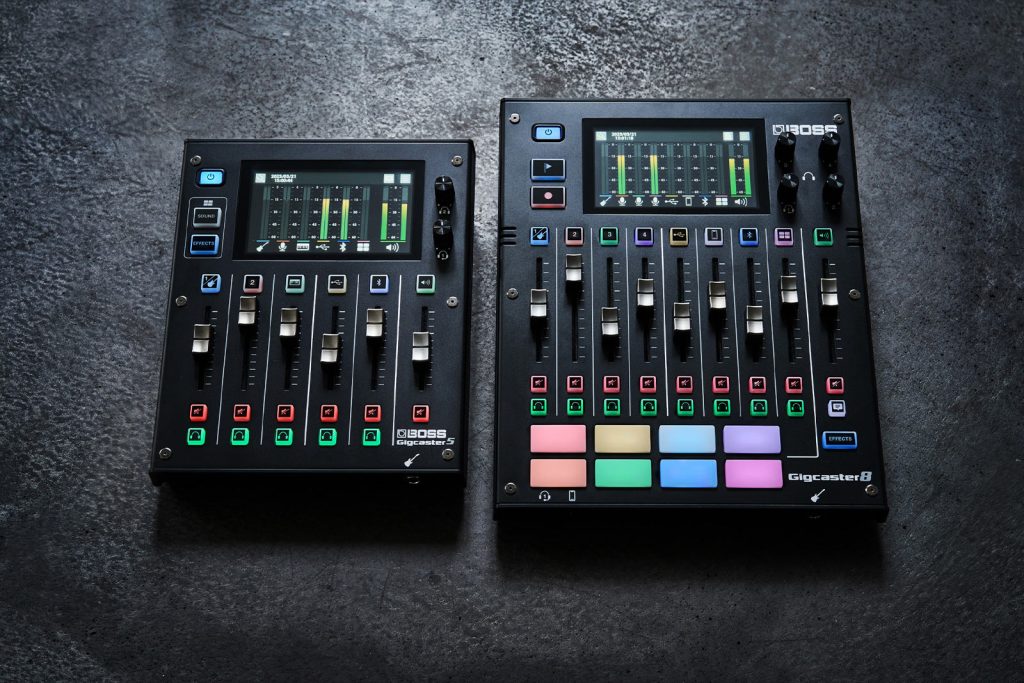
Professional Guitar Tone
For guitarists who produce livestreams, the Gigcaster is a one-stop creative command center. The device allows players to create audio content that turns heads, mix it to perfection, and stream directly to all the major social sites. Plus, the Gigcaster has all the tools to elevate a livestream guitar sound to the highest level.
Driving this new mixer unit is 32-bit floating-point processing and 48 kHz sampling rate. This audio mixer includes flagship-quality BOSS amp models and effects derived from the GT-1000. Dial up an overdriven roar or digital delay. Take charge of independent faders for the five audio input channels. Plus, control effects in the heat of the stream with onscreen effect pads.
"As one becomes more confident in front of the camera, the Gigcaster can expand into a livestreaming ecosystem."
Expanding with Gigcaster
And as one becomes more confident in front of the camera, the Gigcaster can expand into a livestreaming ecosystem. It supports additional BOSS footswitches, expression pedals, and foot controllers for hands-free operation.
Acoustic, Electric, and Bass
Most pandemic-era livestreamers had to produce solo acoustic sessions. Now it’s easy to broadcast a band performance with a pro guitar sound, even if the audience is listening through laptop or smartphone speakers.
The key is choosing an audio mixer with dedicated inputs catering to various acoustic, electric, and bass guitars. This is another defining feature of the new BOSS Gigcaster. Featuring a high-impedance input for direct guitar or bass connection, one can hook up the instrument of your choice. Then, fine-tune the output, and produce a livestream that makes the listener feel like they are in the room.
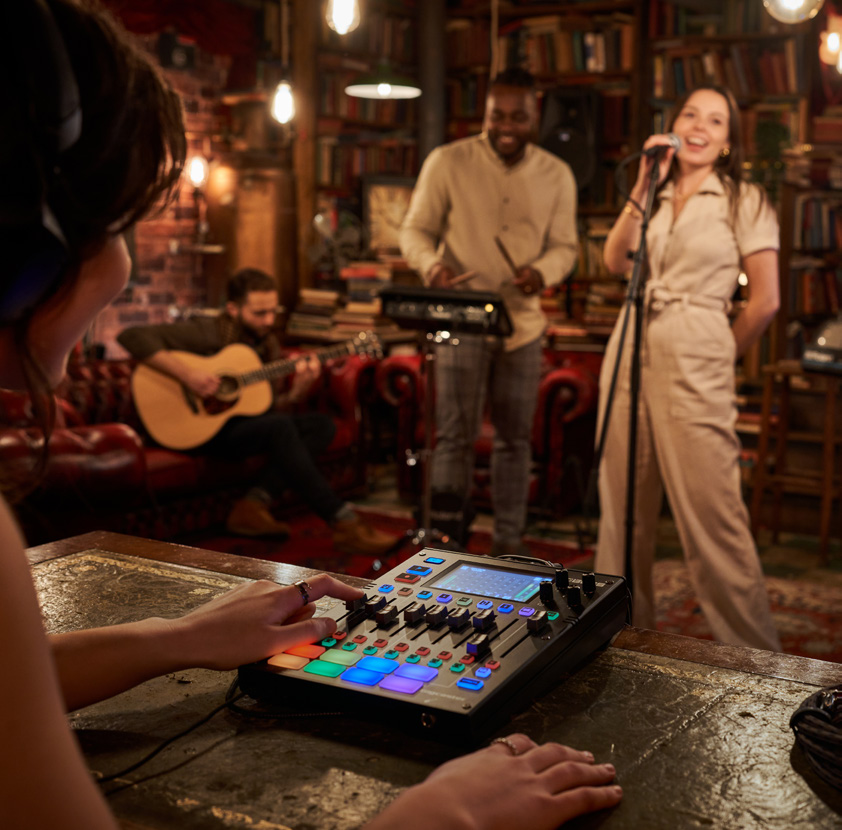
Vocals
Playing and singing at the same time is standard when livestreaming guitar. Things can get muddy if the vocals and guitar bleed together. The ideal solution is to use the separate feeds featured on the BOSS Gigcaster. Smartphone mics can sometimes result in thin audio. Invest in a quality external microphone, and you’ll be ready.
"It's easy to broadcast a band performance with a pro guitar sound, even if the audience is listening through laptop or smartphone speakers."
Streaming into the Beyond
Alongside the Gigcaster’s guitar/bass inputs and stereo line input, there are twin XLR mic jacks. Both feature phantom power and high-quality preamps with low noise and a wide gain range (+70 dB). So while powering up a guitar tone with iconic BOSS pedals, why not do the same with your voice? Dive into vocal effects, harmony, and voice transformer functions with VE vocal processors. Finally, to explore visual content further, explore the world of Roland Pro A/V and advanced livestreaming solutions.




